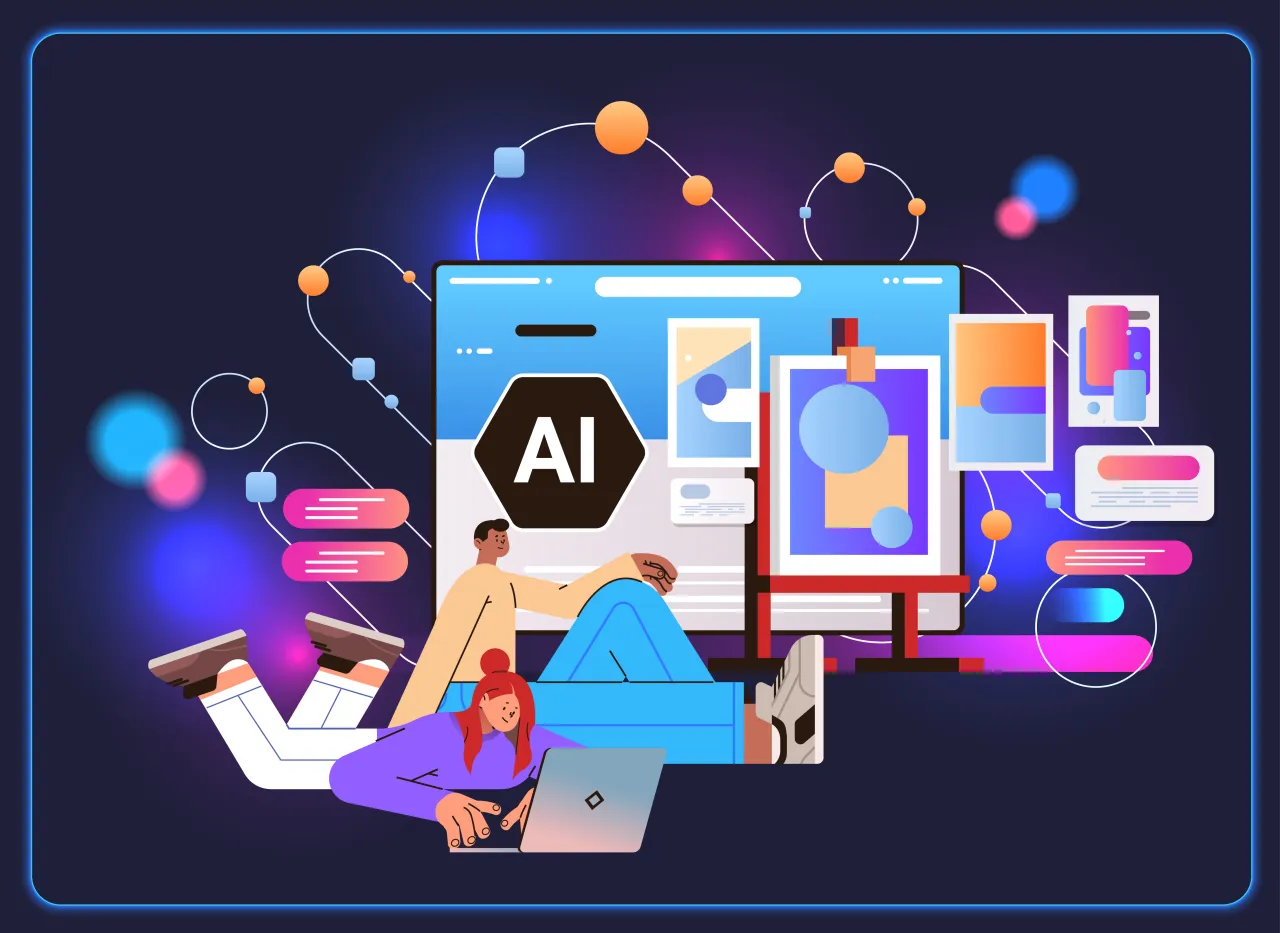Mar 13
How To Avoid AI Overload & Fatigue

How Leaders Can Manage and Navigate AI Fatigue
Imagine a workplace where employees trudge through their tasks, weighed down by the burden of mandatory AI tools. This is the stark reality of AI fatigue, a creeping emotional drain that's spreading like wildfire across organizations worldwide. As a leader, it's crucial to tackle this fatigue head-on, lest you risk stifling innovation and losing your competitive edge.
The statistics are alarming: a staggering 75% of workers confess they lack the confidence to wield AI effectively, leaving them wracked with anxiety and uncertainty about their futures. To counter this trend, we've compiled a treasure trove of tips and insights to guide you.
Is Your AI Strategy Falling Flat? Acknowledge Change Fatigue
To combat AI fatigue, you must grasp its roots. Spoiler alert: technology isn't usually the culprit. Often, employees struggle due to a lack of resources or not understanding how AI tools can make their lives easier. Even the most seasoned business leaders find themselves wrestling with skepticism toward further AI adoption.
Take, for instance, the younger generation, who typically embrace technology with open arms. However, they also have their breaking points, and it's essential to recognize the signs of change fatigue within your crew. Here are three reasons your AI strategy might be on the rocks—all stemming from change fatigue within your team:
#1 Teams are Sapped by Constant Change
Imagine being a sailor on a ship navigating treacherous waters, where new tools and technologies emerge monthly, leaving you reeling. Business leaders salivate at the thought of cost-cutting and service enhancement, yet employees often dread the disruption of their established routines. Think of it as trying to learn a new language while working on a tight deadline—it's exhausting.
#2 Unrealistic Expectations are Set in Stone
For employees unfamiliar with AI, new tools can appear as the ultimate panacea for productivity, quality, and creativity woes. However, understanding how to effectively wield these tools is essential for realizing their potential. Consider the AI Image Generator and AI Art Generator from Depositphotos, which can save precious time by converting text prompts into unique, licensed images. But hold on—crafting a detailed description is crucial for nailing that perfect visual concept. It's like trying to cook a recipe without following the instructions—you'll end up with a culinary disaster.
#3 Your Teammates Lack AI Savvy
Don't assume your whole team is well-versed in the ways of AI. For some, it remains cloaked in mystery or even dread—remember all the chatter about “AI stealing jobs” last year? There's a veritable cornucopia of myths surrounding AI, many addressed in our article on the 7 Common Misconceptions about AI-generated Images. Plus, AI's decision-making processes can outpace traditional software, leaving some team members understandably baffled and irritated.
For more on utilising AI thoughtfully, dive into our insights: 20+ AI Startup Ideas and Tips to Start a Business In 2025.
Manage AI Fatigue—Start with the Problem, Not the Technology
In the face of economic turmoil, the global job market is getting fiercer, leaving employees apprehensive about their futures. The push for change often leaves workers feeling overwhelmed. Forbes reveals that today, merely 43% of employees are willing to embrace these changes, a stark contrast to the 74% who were eager back in 2016. By 2025, change management will be a formidable challenge for team leaders. Employees will feel the pressure to master new tools while maintaining productivity, creating tension on both sides.
To foster innovation without causing chaos, begin by pinpointing the specific problems you wish to solve with AI. This approach eliminates unnecessary complexity and guides you toward solutions that suit your needs. For instance, if your marketing hinges on social media, and collages drain your designers, introduce them to the automated Background Remover by Depositphotos. Another strategy is to clearly communicate the rationale behind adopting a specific AI tool and how it brings benefits to your team. Give them the resources and time they need to acclimatise, and nurture feedback loops to promote experience sharing.

Embrace Strategic Consumption through Change Management
If your team is already feeling the strain of AI fatigue, fret not; several effective remedies exist. Start weaving strategic consumption into your leadership philosophy. Begin by gauging your team’s capacity for change regarding AI tools and compile a list of challenges they face. Then, take several steps back, facilitating gradual, stress-free adoption of AI technologies.
Your first order of business should be breaking substantial changes into manageable phases, each tackling specific issues and AI-driven solutions. For instance, to stave off burnout within a new design workflow, have team members generate images from text prompts once weekly. This approach lets them develop confidence and comfort with their tools.
Employees will thrive if given time, study materials, and resources to explore AI. Regularly solicit feedback, making it clear that their insights matter. Show your willingness to listen and adapt, nurturing a culture that embraces thoughtful AI integration. Check out our AI creativity case study to see how empowering your team fosters remarkable outcomes—How Fuckup Nights Limassol Use Generative Tools to Craft Memorable Experiences.
Cultivating a Culture of Agility: Elevate Employee Wellbeing through Flexibility and Innovation
Innovation requires not just creativity but also flexibility to address your team’s needs. To pave the way for meaningful changes in workflows, embed agility and empathy into your leadership strategy. Imagine a workplace where employees feel safe sharing concerns, where their voices are heard, and their ideas valued.
To prevent AI fatigue, prioritise open communication within your team. Employees who feel safe sharing concerns are more likely to remain motivated and committed. Unveil your new AI strategy at a team meeting, allowing questions and feedback—both the good and the bad. Emphasise the reduction of mundane tasks and the creative freedom that AI tools bring.
An agile culture will serve you well in later stages of AI adoption. Co-create or refine your AI strategy while encouraging your team to experiment. Allow them ample time to test tools and explore creative possibilities without an exhaustive checklist of instructions.
As technology adoption progresses, set realistic expectations concerning AI usage. Ensure your team feels valued and supported, even when things don’t unfold as intended. A balanced leadership mindset prioritising employee wellbeing is essential to overcoming fatigue.
In search of more strategies? Find them here—The Art of Project Management: How to Handle 6 Key Constraints.
Wrapping Up: How Can Your Team Sidestep AI Burnout in 2025?
So, what’s the secret to managing AI fatigue effectively? First, align technological advancements with your business goals by spotlighting issues AI can address seamlessly. Next, introduce changes within your organisation transparently and gradually.
Clarify the goals your company aims to achieve and how AI tools can aid your team. Establish timelines and provide clear guidelines along with study materials. Finally, don’t underestimate the importance of feedback sessions to evaluate if your new AI strategy meets organisational expectations.
Remember: your team’s motivation hinges on respect and care. Regardless of your initial AI experiments’ outcomes, stay in touch often, harvesting insights together to enhance your business trajectory. By doing so, you'll create a workplace where AI is a liberator, not a burden.
Write your awesome label here.
Write your awesome label here.
Write your awesome label here.

We are an online educational platform that helps professionals and aspiring individuals to succeed in their goals.
Connect with us
Copyright Mindmekka Learning Solutions (Pty) Ltd © 2025. All Rights Reserved
Designed and built for everyone
Through a decade of experience in educational technology, as well as pedagogical conviction in experiential learning, Mindmekka has reinvented adult education

Write your awesome label here.

